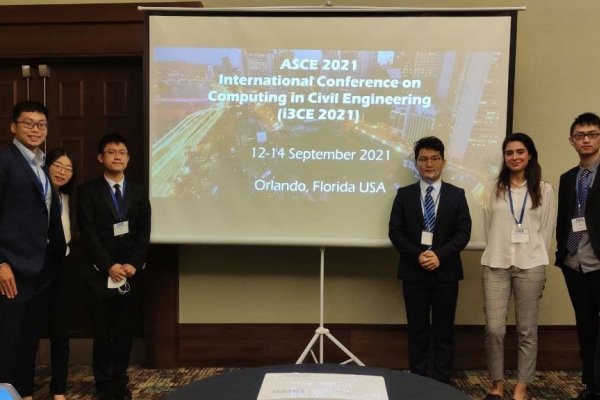23.09.2021

Building Information Modelling (BIM) has considerable potential, especially for the operational phase of buildings. Digital as-built models of existing buildings are needed to use the method, but these are currently few and far between. A comprehensive digitalisation must take place, which can be supported by machine learning (ML) and especially computer vision (CV), thus considerably accelerating the construction processes. One way to restore the quality of construction plans is presented in the paper "Improving 2D Construction Plans with Cycle-consistent Generative Adversarial Networks (CycleGAN)" by Firdes Celik, Benedikt Faltin and Prof. Markus König.
Paper #D plans play an important role in the successful #as-built modelling of buildings. However, due to the often old age of the plans, the quality of the documents is a matter of its own. They contain disturbing factors such as discolouration, stains, fading or buckling lines, which can negatively affect the further processing of CV methods.
In the paper, a CycleGAN is used to eliminate the described anomalies and thus increase the quality of the blueprints. The algorithm has been taught what is a good recognisable plan and what is a bad recognisable plan. This enables it to independently convert bad plans into good ones - or vice versa. It can be shown that the further processing of the improved plans is positively influenced by subsequent CV methods.
Further information, e.g. on the data preparation aspect, can soon be found in the paper.
The results were presented by Firdes Celik at the 2021 ASCE International Conference on Computing in Civil Engineering (i3CE2021).
Link to the conference
• Firdes Celik, M. Sc. (more...)
• Benedikt Faltin, M. Sc. (more...)
• Markus König, Prof. Dr.-Ing. (more...)
Building Information Modelling (BIM) has considerable potential, especially for the operational phase of buildings. Digital as-built models of existing buildings are needed to use the method, but these are currently few and far between. A comprehensive digitalisation must take place, which can be supported by machine learning (ML) and especially computer vision (CV), thus considerably accelerating the construction processes. One way to restore the quality of construction plans is presented in the paper "Improving 2D Construction Plans with Cycle-consistent Generative Adversarial Networks (CycleGAN)" by Firdes Celik, Benedikt Faltin and Prof. Markus König.
Paper #D plans play an important role in the successful #as-built modelling of buildings. However, due to the often old age of the plans, the quality of the documents is a matter of its own. They contain disturbing factors such as discolouration, stains, fading or buckling lines, which can negatively affect the further processing of CV methods.
In the paper, a CycleGAN is used to eliminate the described anomalies and thus increase the quality of the blueprints. The algorithm has been taught what is a good recognisable plan and what is a bad recognisable plan. This enables it to independently convert bad plans into good ones - or vice versa. It can be shown that the further processing of the improved plans is positively influenced by subsequent CV methods.
Further information, e.g. on the data preparation aspect, can soon be found in the paper.
The results were presented by Firdes Celik at the 2021 ASCE International Conference on Computing in Civil Engineering (i3CE2021).
Link to the conference
• Firdes Celik, M. Sc. (more...)
• Benedikt Faltin, M. Sc. (more...)
• Markus König, Prof. Dr.-Ing. (more...)